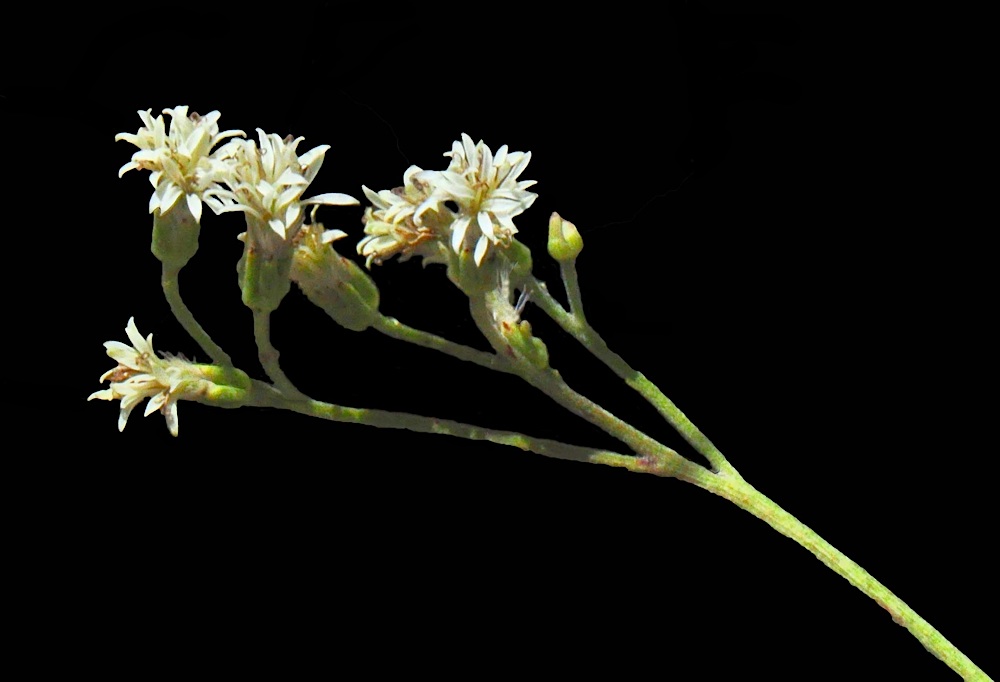
|
Family: Asteraceae |
Perennials, [10-]80-150[-300] cm (rhizomes usually fleshy; plants hairy or tufted-hairy to unevenly glabrate). Stems single or clustered, erect. Leaves basal and cauline (proximal largest, cauline progressively smaller distally, bractlike); alternate; petiolate (petioles well defined, attached to blades at bases [attached near centers, leaves peltate]); blades palmately or pinnately nerved (and, usually, lobed), mostly ovate to elliptic [orbiculate, polygonal], ultimate margins entire or toothed, faces glabrous or sparsely [densely] hairy. Heads discoid, in corymbiform to paniculiform arrays. Calyculi of 1-3[-5] bractlets (shorter than [equaling or longer than] phyllaries). Involucres cylindric to weakly turbinate, 1.5-4[-10+] mm diam. Phyllaries persistent, mostly 5-8[-17] in 1-2 series, erect, distinct, ovate, obovate, or oblong, subequal, margins scarious (tips greenish or gray to whitish, not black). Receptacles flat, foveolate (sometimes hairy), epaleate. Ray florets 0. Disc florets 5-8[-80], bisexual, fertile; corollas white or ochroleucous [yellow, purplish], tubes longer than the campanulate or ± lacking throats, lobes 5, ascending to spreading, lance-linear; style branches: stigmatic areas continuous, apices rounded-truncate. Cypselae mostly ± ellipsoid, ± compressed, [10-]14-18-ribbed, glabrous or hairy; pappi [0] persistent (fragile), of 100-120, white or creamy, barbellulate bristles. x = 30. |
This project was made possible in part by the Institute of Museum and Library Services [MG-70-19-0057-19].
Powered by Symbiota



